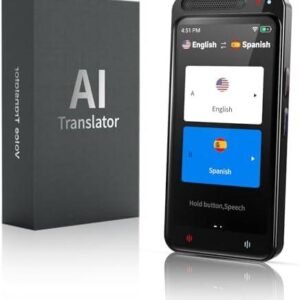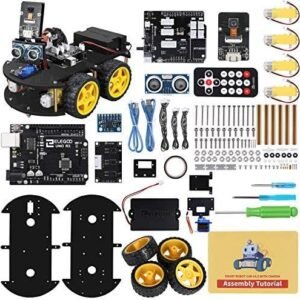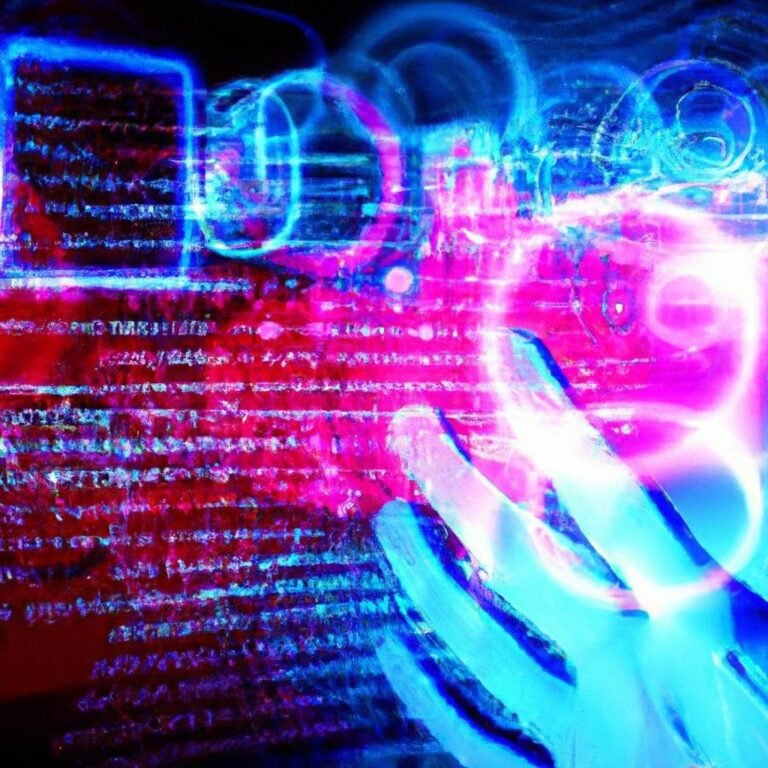In a world increasingly driven by technology, the landscape of education is undergoing a profound transformation, particularly in the fields of Science, Technology, Engineering, and Mathematics (STEM). As we stand at the intersection of innovation and learning, artificial intelligence (AI) emerges as a pivotal force reshaping the future of STEM education. From personalized learning experiences to data-driven assessments, AI is not just a tool but a catalyst for change, unlocking new possibilities for educators and students alike. This article explores the multifaceted ways in which AI is enhancing STEM education, equipping the next generation with the skills and knowledge needed to thrive in an ever-evolving world. Join us as we delve into the innovations, challenges, and opportunities that AI presents in crafting a more engaging and effective educational ecosystem.
Table of Contents
- Harnessing AI Tools to Enhance STEM Curriculum Engagement
- Personalizing Learning Experiences in STEM through Artificial Intelligence
- Fostering Collaboration Between Educators and AI for Improved Teaching Outcomes
- Preparing Students for the Future Job Market with AI-Driven STEM Education
- Final Thoughts
Harnessing AI Tools to Enhance STEM Curriculum Engagement
Integrating AI tools into the STEM curriculum offers a multitude of innovative pathways to enhance student engagement and learning outcomes. These technologies provide personalized learning experiences that cater to individual student needs, allowing them to progress at their own pace. By using adaptive learning platforms powered by AI, educators can deliver tailored content that helps identify areas where students may be struggling and provide targeted resources to deepen their understanding. Additionally, AI-driven simulations can bring abstract concepts to life, making complex scientific and mathematical theories more relatable and easier to grasp.
Moreover, AI tools foster collaboration and creativity among students. Through platforms that utilize machine learning and data analysis, learners can work together on real-world problems, collaborating in a virtual space that incorporates diverse perspectives. This not only helps them develop critical thinking and problem-solving skills but also encourages a sense of community and teamwork. Some key benefits include:
- Enhanced interactivity: Interactive AI modules engage students and motivate them to explore STEM subjects further.
- Real-time feedback: Instant feedback helps students learn from their mistakes and understand concepts more deeply.
- Access to vast resources: AI can curate and present relevant materials from extensive databases, making it easier for students to find information.
| AI Tool | Application in STEM |
|---|---|
| Adaptive Learning Platforms | Personalized content and assessment |
| Data Visualization Tools | Understanding complex data sets |
| Simulations | Interactive experiments |
Personalizing Learning Experiences in STEM through Artificial Intelligence
Integrating artificial intelligence into STEM education opens up a world of possibilities for personalizing learning experiences tailored to the individual needs of students. By leveraging data analytics, AI can assess students’ strengths, weaknesses, and learning preferences, allowing educators to customize their teaching strategies effectively. This ensures that each student can engage with the material in a way that resonates with them, fostering a more profound understanding of complex concepts. For instance, AI-driven platforms can provide personalized problem sets, adaptive quizzes, and targeted resources that reflect a student’s unique learning path.
In addition to enhancing personalized learning, AI can facilitate collaborative and interactive environments that enrich the educational experience. Features such as virtual teaching assistants and intelligent tutoring systems can offer real-time feedback, guiding students through challenges as they arise. This creates a more dynamic educational experience where students are encouraged to take charge of their learning journey. Moreover, the integration of AI tools can help bridge gaps in understanding by offering a variety of learning modalities, such as visualizations, simulations, and hands-on activities, catering to diverse learner needs:
- Real-time analytics to track student progress and adapt resources instantly
- Tailored content delivery to suit individual learning styles
- Interactive simulations for hands-on experiences that enhance engagement
- Collaborative projects powered by AI to foster teamwork and innovation
| AI Tools | Benefits |
|---|---|
| Adaptive Learning Systems | Customizes user experience based on performance data |
| Virtual Labs | Enables practical experiments remotely and safely |
| Intelligent Tutoring Systems | Provides instant feedback and personalized assistance |
Fostering Collaboration Between Educators and AI for Improved Teaching Outcomes
As educators increasingly embrace the tools that artificial intelligence offers, the potential for collaboration between teaching professionals and AI technologies becomes more pronounced. By integrating AI systems into the classroom, teachers can leverage data-driven insights to enhance their pedagogical strategies. This partnership not only allows for personalized learning experiences tailored to individual student needs but also frees up valuable time for educators to focus on creative lesson planning and engaging classroom interactions. Key benefits of this collaborative approach include:
- Real-time feedback on student performance
- Automated grading and administrative tasks
- Enhanced identification of learning gaps
- Customized learning pathways
- Rich resources for STEM curriculum development
Moreover, when educators and AI work in concert, they create a dynamic duality that supports continuous innovation within STEM education. Teachers on the front lines can relay real-time insights regarding student engagement and curriculum effectiveness back to AI systems, allowing for iterative improvements that are reflective of actual classroom dynamics. The synergy fosters an environment where educational technology evolves in response to the unique challenges of teaching, ultimately resulting in improved student outcomes. To illustrate the evolving role of AI in this partnership, consider the following table that outlines various AI applications and their impacts on teaching:
| AI Application | Impact on Education |
|---|---|
| Adaptive Learning Platforms | Personalized learning experiences for diverse learners |
| AI-Powered Assessment Tools | Quick and accurate grading, saving educators’ time |
| Data Analytics Tools | Informed decision-making based on student performance trends |
| Virtual Mentorship Systems | Access to expert guidance beyond the classroom |
Preparing Students for the Future Job Market with AI-Driven STEM Education
The landscape of employment is evolving at a rapid pace, and as such, it’s imperative that educational institutions embrace AI-driven approaches in STEM learning. By integrating artificial intelligence into the curriculum, schools can foster critical skills that are increasingly demanded in the modern job market. Students engaged in AI-enhanced STEM education can expect to develop a distinct set of competencies, such as:
- Problem-solving abilities: By tackling real-world challenges with AI tools, students learn to analyze data sets and devise impactful solutions.
- Technical expertise: Familiarity with AI technologies and programming languages prepares students for future tech-driven roles.
- Collaboration skills: Working on interdisciplinary projects helps students learn to communicate and collaborate effectively, essential traits for success in diverse work environments.
A notable advantage of an AI-centric approach is its capacity to provide personalized learning experiences. Intelligent tutoring systems can adapt to individual learning styles, enabling students to progress at their own pace. This tailored education cultivates not only a deeper understanding of STEM subjects but also enhances students’ confidence in their abilities. To illustrate how AI can revolutionize learning methodologies, consider the following table that lists different AI applications in STEM education:
| AI Application | Impact on Learning |
|---|---|
| Intelligent Tutoring Systems | Personalized feedback and support |
| Data Analytics Tools | Insight into student performance |
| Simulation Software | Hands-on experience with real-world scenarios |
Final Thoughts
As we conclude our exploration of the transformative power of AI in STEM education, it’s clear that we stand on the precipice of a new era in learning. AI is not just a tool; it’s a catalyst for innovation, creativity, and inclusivity in the classroom. By integrating AI technology, educators are equipped to enhance personalized learning experiences, streamline administrative tasks, and inspire a new generation of thinkers and doers.
Yet, it’s essential to remember that this transformation also brings challenges—ethical considerations, the need for robust training for educators, and ensuring equitable access to technology must remain at the forefront of our efforts. The future of STEM education lies in our ability to embrace these challenges head-on, leveraging AI to create a more engaging, effective, and accessible educational landscape for all students.
As we continue to navigate this rapidly evolving field, let’s champion collaboration among educators, technologists, and policymakers to ensure that every learner can thrive. The journey has just begun, and together, we can harness the potential of AI to shape not just careers, but also the future of society itself. Stay tuned for more insights and developments as we venture further down this exciting path!





